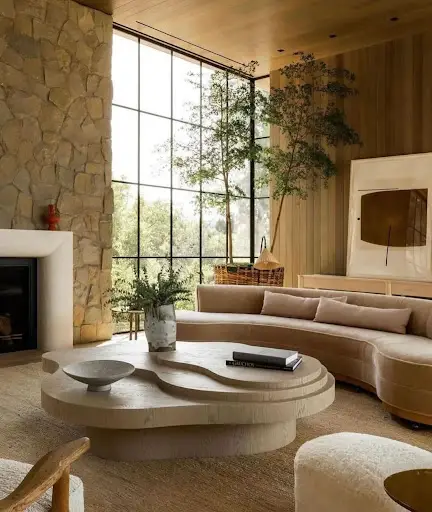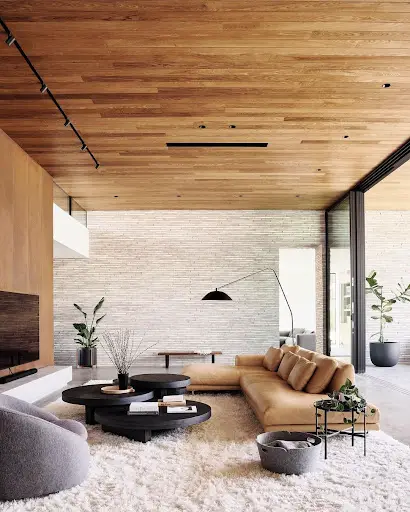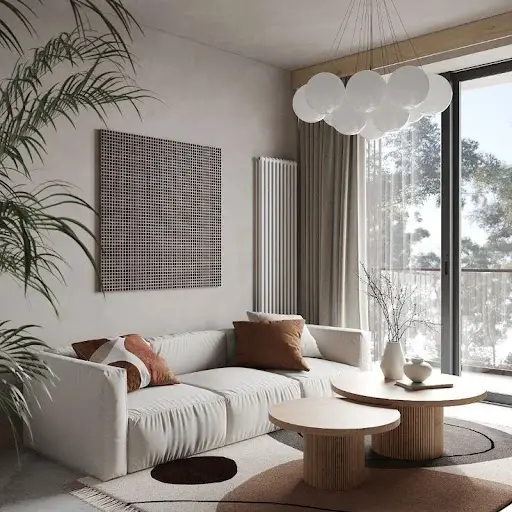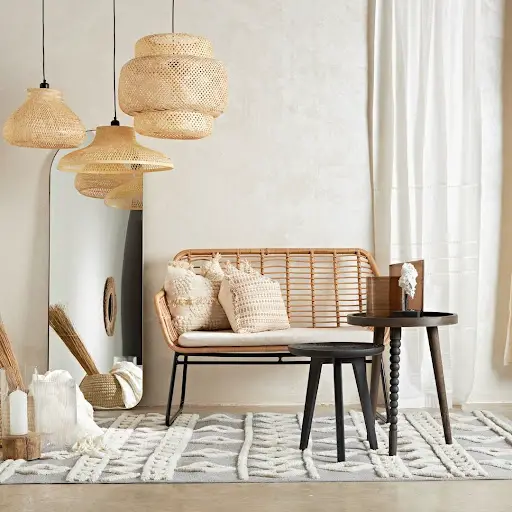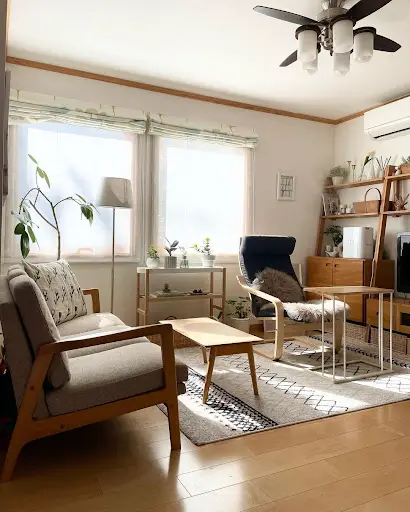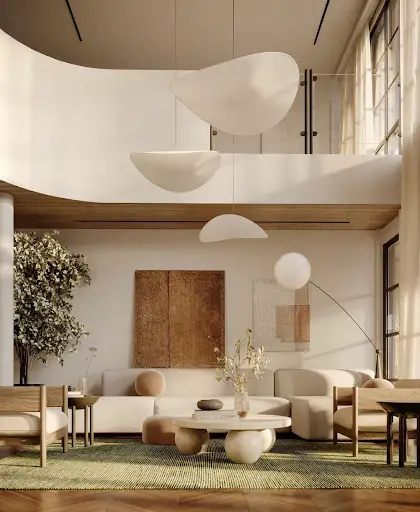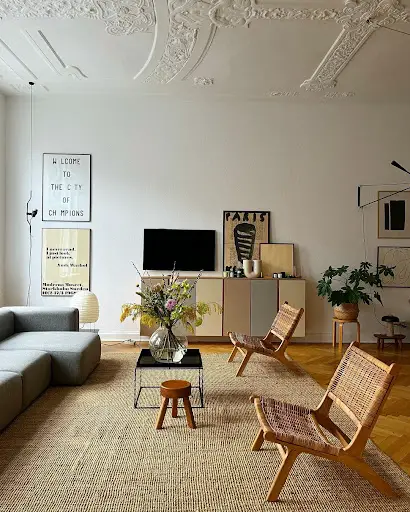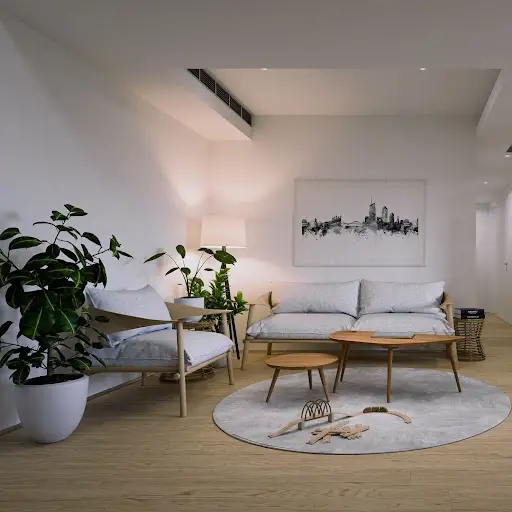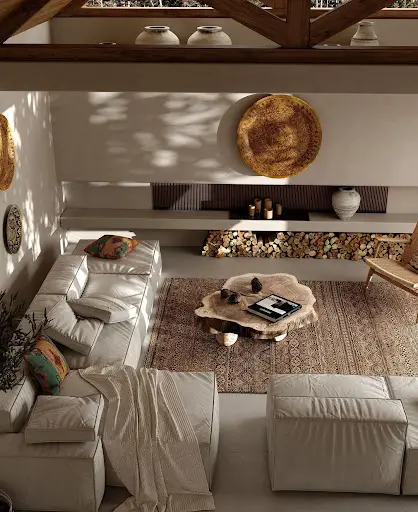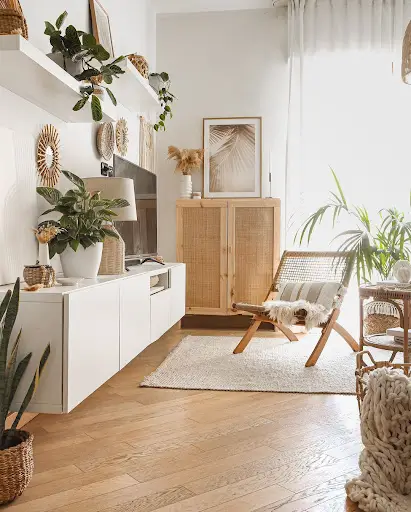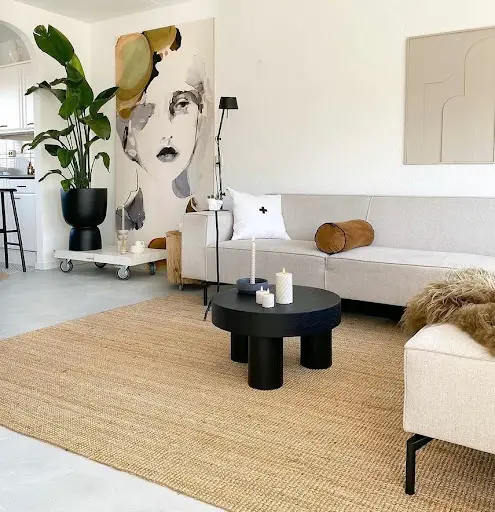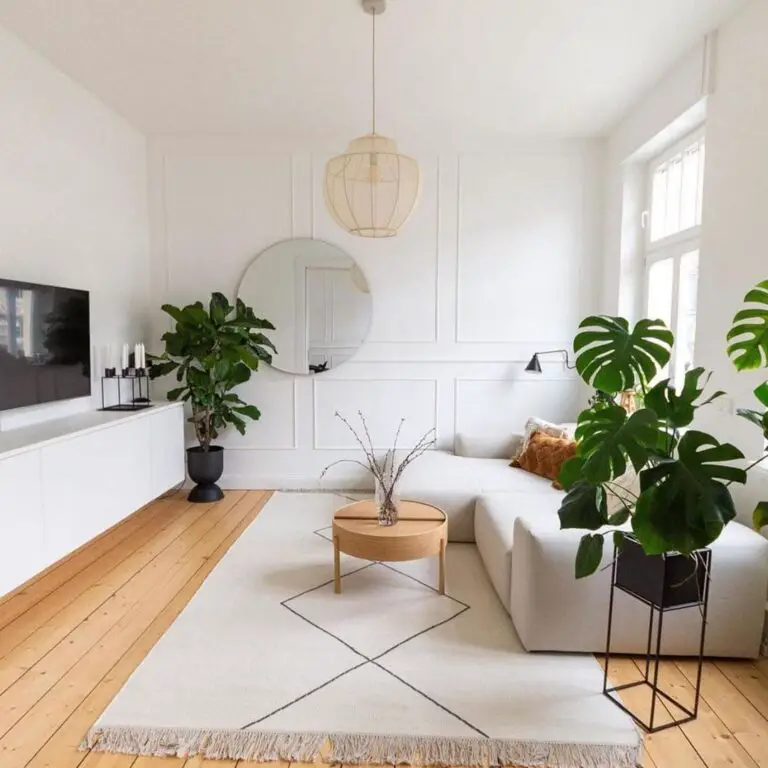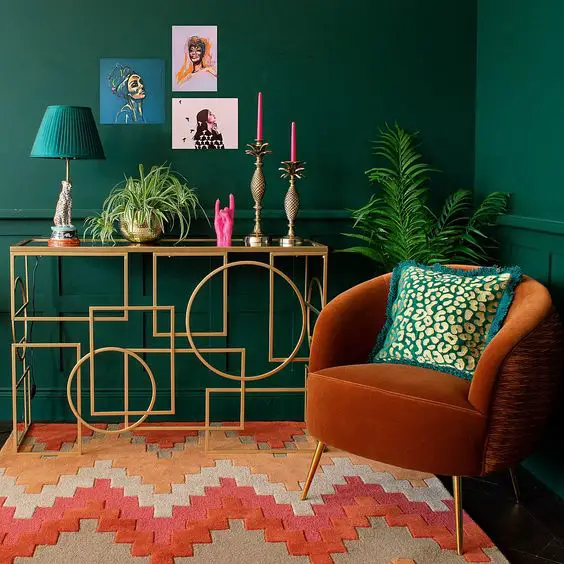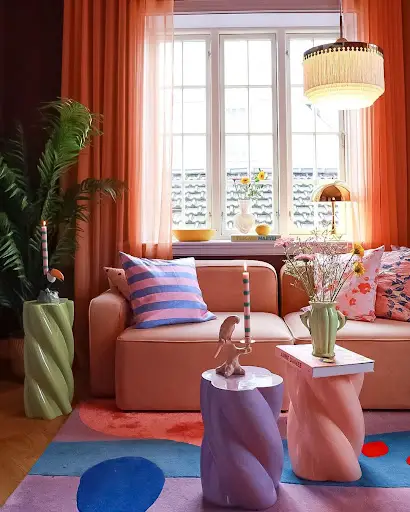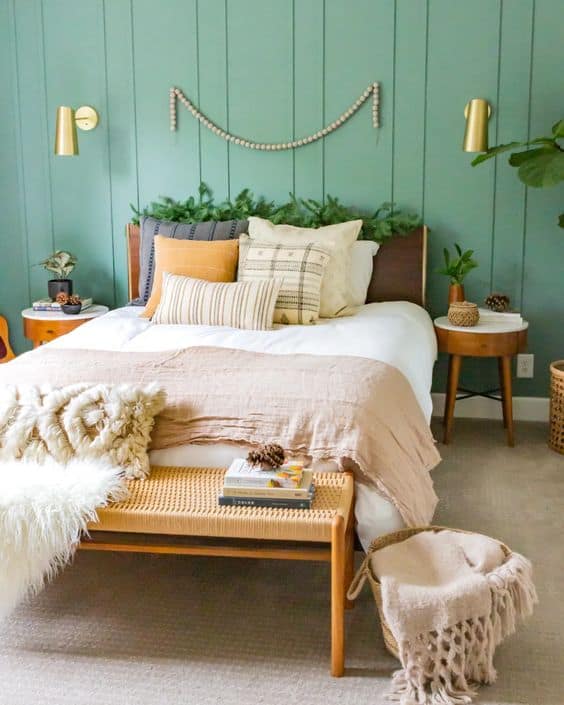When you bring in the cozy comfort of Scandinavian designs and combine them with Japan’s Zen beliefs of embracing the imperfections in one’s surroundings, it creates the wondrous yet minimal beauty of Japandi!
Japandi home interiors are essentially a blend of Japanese rustic minimalism and Scandinavian utility, which evoke a sense of art, nature, and simplicity. With a focus on clear lines, light colors, and bright spaces, this combination achieves the ideal balance of form and function.
This Scandi-Japanese style highlights the design philosophies of both the Scandinavian and Japanese interior styles and combines functionality with ease while retaining a stylish finish that is timeless and classy!
How Do Japanese And Scandinavian Styles Complement Each Other?
Wabi-sabi is the primary design principle used in Japanese interiors. It essentially refers to accepting faults in one’s environment and discovering beauty in order to avoid disappointment and worry. This is considered to be a zen-like attitude.
The term ‘wabi’ is believed to signify ‘rustic simplicity’ or ‘understated elegance’ with an emphasis on the idea that ‘less is more.’ The translation of ‘Sabi’ is ‘finding joy in the imperfect.”
When we look at Scandinavian interiors on the other hand, we experience the concept of hygge which is all about finding peace and solace, creating a warm atmosphere within a space.
While hygge emphasizes coziness and wabi-sabi emphasizes imperfections, the two design philosophies are actually quite similar when you look at their core concepts. The essential characteristics of both styles—minimalism, sincerity, and craftsmanship—are what make them so complementary to each other.
Elements Of Japandi
There are a few important elements that are a must to fully satisfy the Japandi interior style, and they are quite easy to put together, so let’s dive right in so you can find some inspiration to go on a brand-new interior revamp!
Neutral Color Palettes
The key to achieving any minimal interior is to go for color palettes that are neutral and easy to furnish with. Neutral colors also make your rooms feel more spacious and open.
Layers of neutral colors are used in the Japandi color scheme, along with black accents and natural greenery. These colors should be balanced to produce a quiet, serene ambiance. Use colors such as shades of brown, beige, gray, and white for your furniture, accent cushions, floor rugs, drapes, etc., in addition to your walls.
RELATED:
- 21 Beige Bedroom Ideas To Bring In The Warmth And Coziness!
- 17 Brown Bedroom Ideas For The Perfect Earthy Aesthetic!
Natural And Handcrafted Materials
Japandi design emphasizes the use of natural materials such as wood, stone, and woven fibers. These materials are strong, resilient, and durable. The use of naturally aged materials is a way of highlighting the wabi-sabi philosophy of finding beauty in imperfections, as you might not always find a piece of wood or a slab of stone with the perfect graining and lines.
Japandi furniture is always made with natural materials, combining form, function, a simple design, and the use of natural components. Items may be brand-new, repurposed, or handcrafted.
Minimalist Design
The use of clean lines and minimal ornamentation is important in the Japandi style. You are, after all, aiming to create a space that gives you a calming feeling, so minimalism is the right approach in order to reduce stimulation from your surroundings.
Unlike the cold features of a regular minimalist interior space, Japandi gives us a more warm and welcoming atmosphere due to its color palette and material choices.
Eco-Friendly Features
While Japandi doesn’t necessarily preach sustainability, it is an element that comes into play on its own due to the emphasis on natural and eco-friendly materials. Apart from the use of wood, the minimalism in this design encourages us to buy less and buy better, as you don’t need to fill up your space with multiple décor items to complete the look.
Wabi-sabi, an inseparable part of the Japandi decor, teaches us to embrace imperfections, and while it might not always be possible for you to fix up a furniture piece within your home, I hope it encourages you to show some love for thrift stores and second-hand pieces. You never know when you might strike gold at a thrift store and find a unique vintage set that can completely transform your space!
7 Japandi Home Decor Ideas
Play Around With Earthy Colors
Japandi interiors often lean neutral. Add pops of brown and beige tones with your sofas, accent cushions, and natural wooden furniture, or try neutral paint for the walls.
As in this space above, floor rugs and even green accents from your plants can help unify your room with the correct color harmony. Feel free to use warm shades of orange, gray, mustard yellow, and even a soft sand color for some visual interest.
Avoid pairing white with beige’s neutral tones since it may take over the room and make the beige appear lifeless. On the other hand, black is the perfect hue to use for accent elements.
Sustainable Material Is The Hack!
Japandi design’s philosophy is highlighted by the use of natural materials. But in addition to the usual hardwood furniture, you may also choose from a variety of woven items made of rattan, cane, wicker, and bamboo.
These items are always guaranteed to be one of a kind, and you gain bonus brownie points for supporting regional artisans and living sustainably. For a home with a Japanese design aesthetic, floor rugs and furniture made of jute and linen are perfect.
Simple And Minimal Furniture Is key!
Wooden furniture is the go-to but remember to pick designs that are minimal with clean lines and high durability.
Picking wooden sets with cushions is ideal, as it is easier for you to change and upgrade your furniture by simply changing cushion covers. This allows you to experiment with different textures, materials, and even colors without having to spend too much on replacing the entire sofa set. It’s a long-term solution that will undoubtedly help you save a ton of money.
Be Creative With The Walls
Bamboo and cedar paneled walls were frequently used in traditional Japanese dwellings. If you want to draw attention to your walls, you may utilize exposed stone block walls in addition to using wooden paneling.
This gives your environment texture and patterns plus a distinctive visual element. And if you are looking to only upgrade the paint, pick out neutral tones to maximize the natural light entering the room, but avoid all-white, as it sometimes comes out as overly cold, not adding to the hygge.
Add Some Decor And Accessories
When choosing the ideal accessories and décor for your space, curate everything with the utmost care. Every component must look as though it belongs there and not be out of place. Hence, when it comes to Japandi design, be sure the items selected are simple, natural, and minimal in number.
Danshari is a notion that is honored in Japandi. This discipline requires you to let go of things, ideas, and emotions that seem to drag you down while keeping only the ones you genuinely love and adore.
Thus, keep this in mind while designing your room, because you don’t need to stuff it to the gills to make it feel cozy. To develop a comfort zone, you simply need the things that are important and significant to you.
Prioritize Plants
In Japandi, the idea of bringing the outside inside is widespread. There are various advantages to having plants all around us in our homes.
Japanese and Scandinavian interior designs are used as additions to homes because of their strong affection for the beauty of nature. The plants’ subtle touches of green contrast beautifully with the neutral backgrounds created by the design style’s color scheme.
Just Declutter
It should be obvious that having fewer possessions will make your home easier to organize. We frequently retain a lot of items in our homes without ever considering whether we actually need them.
When it comes to Japandi style, it’s preferable to prioritize quality over quantity, so limit the items you keep to those that are useful and hold some special meaning for you personally. Dhanshari is a crucial idea to bear in mind, as we’ve already read, not just when it comes to interior decorating but also as a life skill in general.
READ NEXT: 11+ Japanese Bedrooms, You Can’t get your eyes off!

